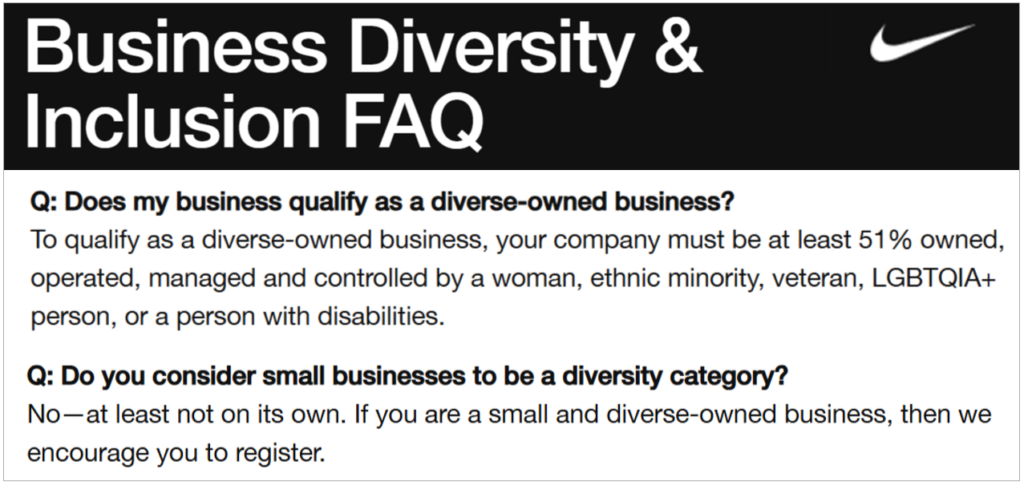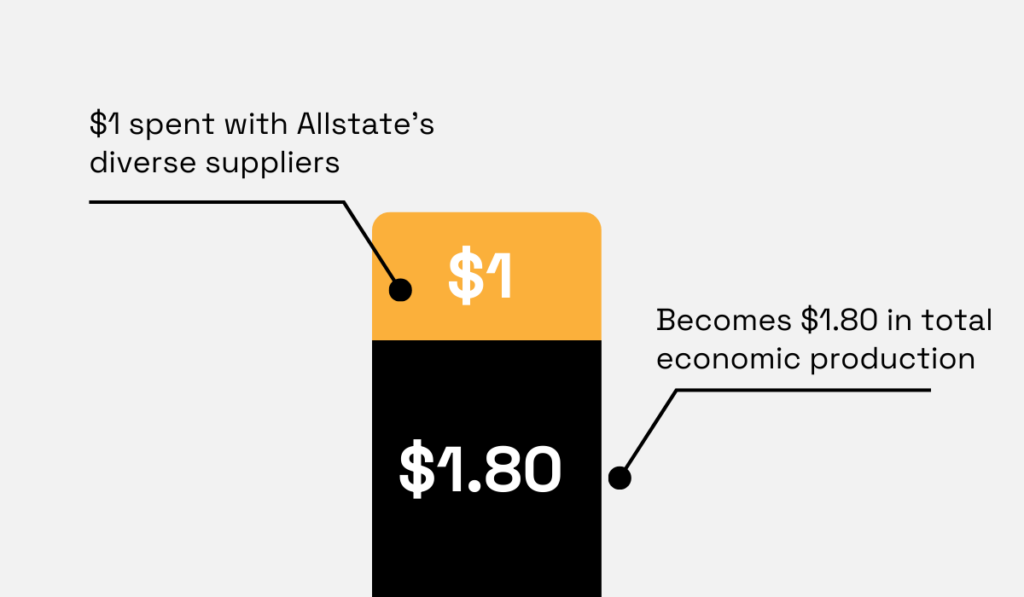Supplier Diversity Assessment: Why it Matters in Procurement


Key Takeaways:
How diverse is your supplier base?
Are you fully leveraging the potential of working with suppliers from underrepresented groups?
Supplier diversity isn’t just about enhancing your company’s reputation—it’s a strategic approach that drives innovation, strengthens supply chains, and delivers lasting social impact.
What’s more, diversity can often be a source of competitive advantage.
In this guide, we’ll define supplier diversity, explore its key benefits, and explain how to assess and implement successful diversity programs in your organization.
To explain what supplier diversity means and avoid confusion, let’s draw a parallel with another well-known strategy—supplier diversification.
Traditionally, companies diversify their supply base to mitigate risks like supply chain disruptions, price fluctuations, or overreliance on a single supplier.
Supplier diversity also involves broadening your supply base but with a distinct focus.
It’s about intentionally partnering with suppliers that are owned by individuals from underrepresented or marginalized groups.
Here’s how Julie Kratz, founder of organizations promoting allyship in the workplace, explains it:

Illustration: Veridion / Quote: Forbes
She continues to underline that these diverse backgrounds include groups “whose identities have been traditionally marginalized in the business world.”
What does this mean?
Simply put, who is considered a diverse supplier will depend on the country, region, or legal definition of underrepresented or marginalized groups.
However, some groups are widely considered as diverse, such as businesses majority-owned by:
It’s worth noting that small or local businesses may or may not fall under diversity initiatives.
This largely depends on national regulations, definitions, or whether a company runs a separate program for small businesses.
For example, here’s how Nike distinguishes between diverse suppliers and small businesses:

Source: Nike
Nike’s Q&A also highlights another important aspect of managing supplier diversity—certification.
Most companies prefer that diverse suppliers obtain certification from recognized third-party organizations.
This process involves independent verification of a supplier’s diversity status, typically through documentation, interviews, or on-site visits.
An example is WBENC, an organization certifying women-owned businesses in the US.

Source: WBENC
Alternatively, organizations may also establish their own qualification criteria or, in certain cases, accept self-certification.
Did you know that 85% of Fortune 500 companies already have supplier diversity initiatives?
While the reasons for this widespread adoption are many, we’ll explore the three key benefits of supplier diversity.
Let’s examine them in detail.
Supplier diversity has proven to be a powerful strategy for companies seeking to enhance innovation and drive growth.
Why?
Because diverse suppliers bring unique perspectives and creative solutions that traditional suppliers may overlook.
After all, belonging to a minority group and running a business breeds innovation, adaptability, and agility.
It’s no surprise, then, that nearly half of the companies surveyed in 2021 by JAGGAER cited supplier innovation as the most significant advantage of their diversity programs.

Illustration: Veridion / Data: JAGGAER
These innovations can take many forms, from groundbreaking product designs and improved processes to cost-saving solutions and enhanced customer experiences.
For example, during the pandemic, a car manufacturer collaborated with V2Soft, a minority-owned IT services provider, to develop an online platform for vehicle sales.
V2Soft successfully launched the portal, resulting in a sales increase of 10% to 15%.
As Varchasvi Shankar, V2Soft’s CEO, highlights:

Illustration: Veridion / Quote: McKinsey
This example shows how companies can gain a competitive edge and innovate by leveraging diverse suppliers’ unique backgrounds, experiences, and market insights.
Supplier diversity doesn’t just foster innovation—it also strengthens supply chain resilience.
By broadening your supply base to include diverse suppliers, you reduce overreliance on a limited pool of traditional vendors.
This diversification minimizes risks such as disruptions caused by geopolitical issues, natural disasters, or economic instability.
Additionally, diverse suppliers often bring unique strengths, such as localized expertise and flexibility, to the table.
Terrez Thompson, vice president of global supply inclusion and diversity at Coca-Cola, points out that diverse suppliers are now being considered for larger contracts than before.
Their main advantage lies in their ability to adapt quickly to changing circumstances.
As Thompson explains:

Illustration: Veridion / Quote: HBR
This agility can be invaluable during crises when quick turnarounds are needed, or in addressing supply chain bottlenecks.
Positive economic and social impacts on the communities where diverse suppliers operate are arguably the greatest benefit of supplier diversity.
By engaging with diverse suppliers, your company directly contributes to job creation, economic growth, and overall community development.
This impact is quantifiable, as highlighted by the findings in Allstate’s 2022 Sustainability Report:

Illustration: Veridion / Data: Allstate
This means that every dollar Allstate invests in diverse suppliers generates nearly double the economic value, amplifying its social impact as well.
These benefits can enhance your company’s reputation, attract new customers, and build brand loyalty, ultimately strengthening your market position.
Now that you understand the benefits of supplier diversity, how can you measure it within your organization?
The primary tool for this is spend analysis.
It involves reviewing how much your company spends on procurement and how much of that is directed to diverse suppliers.
To start, define what constitutes a diverse supplier within your organization.
From there, dive deeper into spend data to calculate and evaluate key supplier diversity metrics.
Here’s an overview of some typical metrics and what they indicate.
| Metric | Description |
|---|---|
| Spend with diverse suppliers | Total spend on goods and services from diverse suppliers. |
| Percentage of total spend | Proportion of total procurement spend allocated to diverse suppliers. |
| Supplier diversity categories | Classification of suppliers based on diversity types (e.g., women-owned, minority-owned, etc.). |
| Number of diverse suppliers | Count of distinct diverse suppliers engaged by your organization. |
| Supplier certification status | Number of suppliers whose diversity status is verified through third-party certifications. |
If your spend analysis spans multiple years, you can also calculate year-over-year growth, which reflects the change in spend with diverse suppliers compared to previous years.
It’s worth noting that some corporations encourage their tier 1 suppliers to engage with diverse suppliers as well, and then track and report this metric in their supplier diversity reports.
In any case, the metrics you use to assess supplier diversity should give you a clear picture of where your company stands, allowing management to set specific goals.
For example, a common goal might be to increase spending with diverse suppliers by 10% over the next year or to expand the number of certified diverse suppliers in key categories.
From there, these metrics can be tracked to monitor progress, identify areas for improvement, and enable strategic decision-making.
Achieving meaningful results requires more than just analysis—it demands an effective supplier diversity program.
And, as Aaron McMillan, editor of Procurement Magazine, notes:
“Creating an effective supplier diversity program requires strategic planning, dedication, and a comprehensive approach.”
To build a truly impactful program, here’s what you need to focus on.
The success of any supplier diversity program depends on buy-in from stakeholders at all levels.
Without their support, even the most well-designed initiatives can fail to gain traction, resulting in partially or fully unmet diversity goals.
To get it, start by educating internal stakeholders about the benefits of supplier diversity.
Highlight how it can drive innovation, increase supply chain resilience, and deliver positive social and economic impacts.
This promotion of diversity is most effective when it starts at the top.
In other words, it’s crucial to engage senior executives early and secure their commitment to champion supplier diversity.
As Lindsay Azim, director analyst at Gartner, underlines:

Illustration: Veridion / Quote: Supply Chain Xchange
Leadership endorsement sends a strong message across the organization and helps build momentum for the program.
Next, it’s just as important to involve stakeholders from departments such as operations, finance, and legal to ensure alignment on goals and seamless execution.
Additionally, as Azim advises, selecting a multi-functional team of representatives passionate about diversity can significantly enhance program visibility and impact.
These ambassadors act as internal champions, promoting supplier diversity across various functions.
In one global technology company, Azim says, ambassadors were embedded in procurement teams across spend categories and geographic regions.
By dedicating 10–20% of their time to helping teams identify and engage diverse suppliers, they achieved a 22% increase in diversity spend within a year.
Overall, prioritizing stakeholder buy-in and fostering a collaborative, transparent approach are essential for the success of your supplier diversity program.
A successful supplier diversity program relies on clear and reliable supplier data.
Internally, this ensures your team can identify diverse suppliers already in your supply chain, analyze spend allocated to them and evaluate progress toward program goals.
Streamlined supplier data collection and real-time visibility can be achieved by investing in procurement tools, such as spend analytics and supplier relationship management platforms.
But what about finding new diverse suppliers?
In such cases, you need fresh and accurate supplier data from external sources.
Without it, identifying, evaluating, and selecting diverse suppliers can be challenging.
In fact, the JAGGAER survey we mentioned earlier found that nearly one in three organizations face this issue:

Illustration: Veridion / Data: JAGGAER
Just like with internal supplier data, the right technology can help you streamline this process.
In this case, your procurement team needs access to a global, continuously updated database of suppliers with advanced search functions.
That is just what our data service offers.

Source: Veridion
With Veridion, your team can input specific criteria in the system and receive a list of suitable suppliers in just seconds.
Additionally, you can use Veridion’s data to enrich your supplier profiles and run risk assessments.
The best part?
You can search for suppliers by diversity criteria, namely their Environmental, Social, and Governance (ESG) policies and commitments.

Source: Veridion
By leveraging these ESG data points, you can assess diverse suppliers’ sustainability, including their environmental impact, ethical practices, and fair labor policies.
In summary, the easiest path to visible and accurate internal and external supplier data is through technology, particularly advanced procurement tools.
What does having a solid program mean?
It all starts with documented supplier diversity goals and clear metrics.
While your total spend with diverse suppliers is an important metric, focusing solely on dollar amounts can limit the program’s overall impact.
After all, you could achieve a high spend by partnering with just a few diverse suppliers.
While this would undoubtedly benefit those suppliers, the program itself would fall short of its broader purpose.
As Lois Eichacker, vice president of customer success at Supplier.io, explains:

Illustration: Veridion / Quote: SDC Exec
This means that a solid diversity program takes a holistic approach by tracking additional metrics, such as:
The last metric also indicates that successful programs attract new diverse suppliers through events, mentorships, or partnerships, while actively reducing barriers to contracting.
Lastly, a strong program sets tangible goals, such as increasing diverse supplier spend by a specific percentage or doubling the number of diverse suppliers over a set period.
We hope this guide has highlighted that supplier diversity is more than a trend or corporate responsibility.
It is a strategic approach to supplier sourcing that drives innovation, strengthens supply chain resilience, and delivers meaningful social impacts.
Achieving supplier diversity in your organization starts with thorough spend analysis, clear metrics, and accurate supplier data.
With the right tools, these elements empower you to implement a well-structured diversity program that unlocks lasting benefits for your business and the communities you serve.